Katharine Hepburn is among the most-honored and best-loved American actresses of all time, with 12 Academy Award nominations and 4 wins as Best Actress. Hepburn’s tally of Oscar gold has yet to be surpassed, and is only equaled by Meryl Streep (though one of her four was for Best Supporting Actress, she far eclipses Hepburn in nominations, with 21 to date). Her 60-plus year career spanned the Great Depression to the edge of the new millennium, with 44 feature films to her credit; she also acted extensively on the stage, in no less than 33 productions (garnering two Tony Award nominations, but no wins). Hepburn didn’t work often in television, but managed six Emmy nominations and one win regardless.

Hepburn’s career had its ups and downs, even being labelled “box office poison” in the late ‘30s, but she powered through with her indomitable Yankee spirit, and went on to become the Grande Dame of American cinema. Forthright and unconventional, strong-willed and avowedly feminist, Hepburn acquired a reputation for being difficult at times, but none doubted her professionalism or talent. A 1990 Kennedy Center honoree for lifetime achievement, Hepburn was also awarded greatest female star of classic Hollywood cinema by the American Film Institute in 1999.
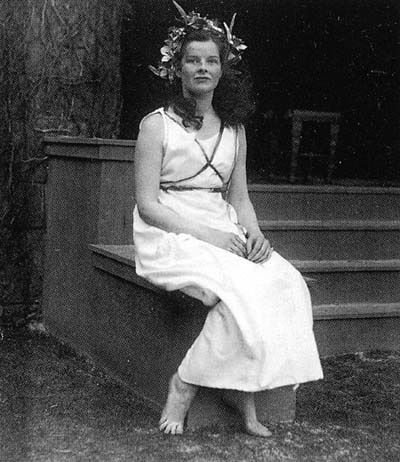
Her private life sparked commentary as well; Hepburn married only once, to businessman Ludlow Ogden Smith, a brief Depression-era alliance that was annulled. She had a short-lived, 18-month fling with billionaire Howard Hughes in the late ‘30s, but for most of her life she was solitary, with one exception. Hepburn was (in)famously involved with fellow actor and frequent onscreen partner Spencer Tracy, a married man who, as a Catholic, was unwilling to divorce his wife. Their affair was an open secret in Hollywood for 26 years, from their first movie until his passing in 1967, but only after Tracy’s wife’s death in 1983 did Hepburn publicly acknowledge their intimate connection. Their offscreen chemistry translated well to film, making Hepburn and Tracy one of the most popular and successful teams in Hollywood history.
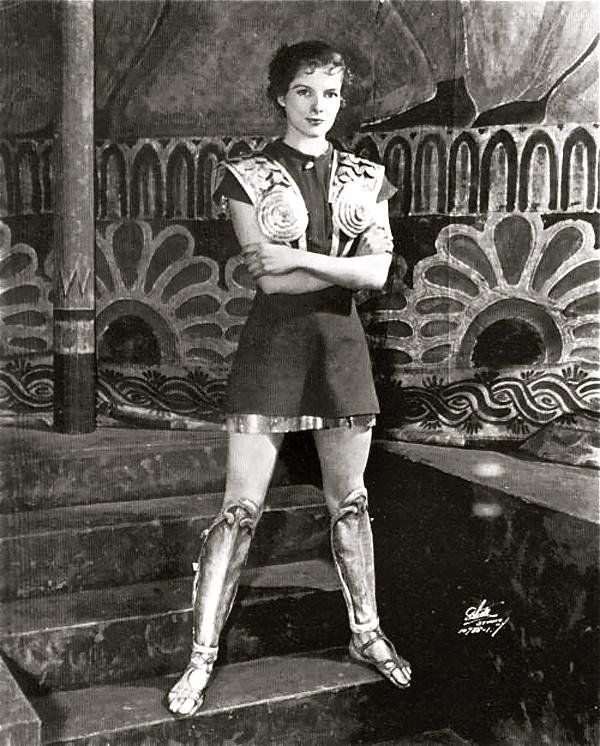
Born 12 May 1907 at 5:47 PM EST in Hartford, Connecticut (Rodden Rating AA), Katharine Hepburn seems fated for an acting career, with asteroid Actor 12238 embedded at station, indicating a pivotal role to play in her biography for the dramatic arts. At 20 Virgo, Actor turned direct a week after her birth, closely trine the 21 Taurus Sun, also trine the Moon at 27 Taurus, making acting a self-defining (Sun) element and one which held a deep emotional connection (Moon) for her.
Actor also opposes Saturn, ruling career, at 24 Pisces (as well as asteroid Kate 2156 at 18 Pisces, a common nickname for Hepburn), and is involved in a Grand Cross with Pluto at 22 Gemini and asteroid Academia 829 at 22 Sagittarius. Acting transformed (Pluto) her career plans (Saturn), and in the square from Actor to Academia (for the Academy of Motion Picture Arts & Sciences, sponsor of the Oscars) we see the first presentiments of an Oscar-winning career. As well, asteroid Oskar 750 (alternate spelling) at 7 Aries is semisquare the 21 Taurus Sun, making it part of her self-image, and exactly inconjunct her 7 Scorpio Ascendant, governing how others see us, also making “Oscar winner” a vital part of her public image.

Truly, Hepburn’s power (Pluto) to effect change (also Pluto) lay in her decision to make acting (Actor) her profession (Saturn), despite a liberal arts education at Bryn Mawr College in Pennsylvania, which earned her a history and philosophy degree in 1928. Bitten by the acting bug in college, within six months of graduation, Hepburn made her Broadway debut.
Hepburn’s power extended to the culture at large. She is credited with being a formative influence on women’s fashion, in particular her early adoption of pants, on stage and off, which pioneered that trend for women. Fans quickly copied her style and she became an icon of the independent, emancipated, modern woman. In 1986 she received a lifetime achievement award from the Council of Fashion Designers of America in recognition of her influence on the industry. The tendency toward modern and avant-garde is seen in a square from Uranus at 12 Capricorn, arbiter of all things futuristic and forward-looking, promoter of unconventionality, to Venus, ruler of style and fashion, at 18 Aries. Asteroid Katharina 320 (Katharine variant) here at 21 Aries, conjoined Venus, made Hepburn’s style choices very personal to her, an expression of her core identity (Katharina) and uniqueness (Uranus).

That Venus/Uranus square also colored her relationships, which were anything but conventional. Divorce wasn’t generally available in the 1930s, but Hepburn sought an annulment from husband Ludlow Ogden Smith as her way out of an unfulfilling union. Asteroid Smith 3351 at 15 Gemini is sesquiquadrate asteroid Juno 3 at 5 Scorpio, named for the Roman goddess of marriage, establishing their legal connection, and also squared asteroid Union 1585 at 18 Pisces, another marker of marital status. Smith is also exactly sextile asteroid NOT 2857 at 15 Aries, a symbol of negation or refusal to proceed, perhaps helping Hepburn realize that this marriage was a mistake. Hepburn never had children, and asteroid Demeter 1108, named for the Greek goddess of maternity, exactly conjoins NOT.
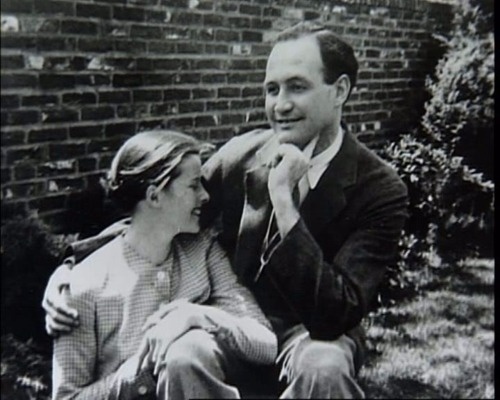
Hepburn’s next relationship was an affair with eccentric billionaire Howard Hughes, who proved instrumental in her career, despite their short alliance. Asteroid Howard 12561 at 21 Gemini closely conjoins Pluto at 22 Gemini, which rules the billions, establishing his portfolio. Howard also trines asteroid Aphrodite 1388 at 23 Libra, named for the Greek goddess of love, more interested in flings and affairs than long-term pairings. Asteroid Hughes 1878 at 24 Leo conjoins Hepburn’s 16 Leo MC, ruling career, and Hughes helped Hepburn revitalize her career by purchasing the film rights to a hit Broadway play for her, allowing a Hollywood comeback after being labelled “box office poison” (more of that later).
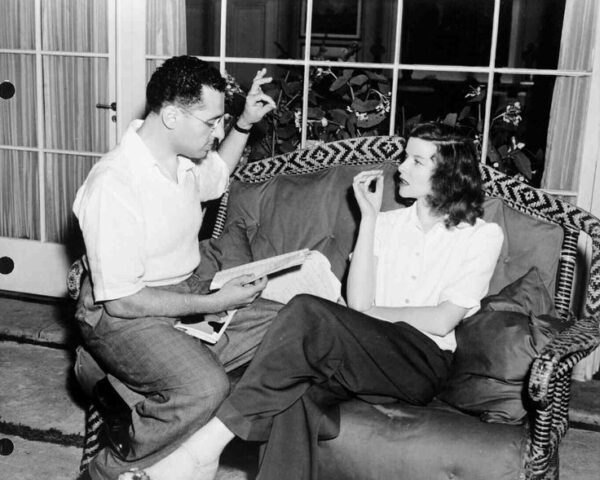
Which leaves just Spencer Tracy, the closest Hepburn ever came to having a true life partner. Their extramarital alliance was certainly another nod to Hepburn’s freethinking, iconoclastic, mold-breaking Venus squared Uranus.
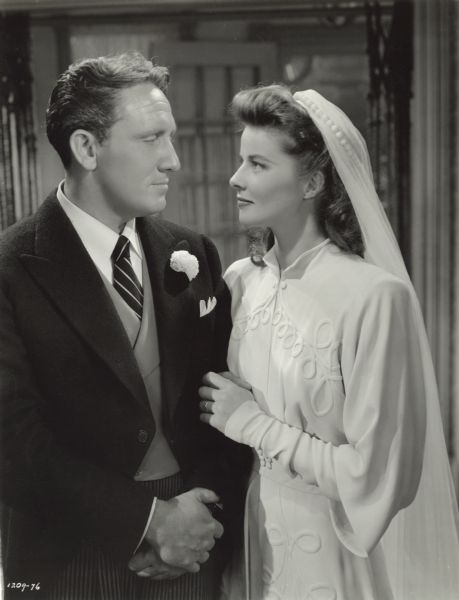
Hepburn and Tracy’s quarter-century love affair can be seen in asteroid Spencer 117329 at 4 Sagittarius, conjoined asteroid Hera 103 at 0 Sagittarius, named for the Greek goddess of marriage. Her union with Tracy was a partnership in all but name, and his importance in her life is further reflected by asteroid Tracie 3532 (alternate spelling) at 12 Taurus, conjoined the Sun as well as Mercury at 8 Taurus. Individuals with asteroids representing them conjunct the native’s Sun exert a powerful influence, for good or ill, molding and shaping their character or destiny. Theirs was a true meeting of the minds (Mercury), an intellectual as well as romantic compatibility which brought out the best in each.

There’s one other way in which Katharine Hepburn may have been unconventional in her love life: was she actually lesbian? Hepburn certainly had a “mannish” streak about her, dating from childhood, when she would cut her hair short, wear boy’s clothes, and called herself “Jimmy.” (Oddly, asteroid James 2335 at 16 Leo squares her Sun and exactly conjoins her MC, governing one’s place in the world, suggesting Hepburn may have felt more comfortable as a male in some ways.) Her early theater work showcased her in gender-nonconformist roles, when she got the lead in “The Woman in the Moon,” her senior play at Bryn Mawr, and as an Amazon-like figure in “The Warrior’s Husband,” the Broadway show that brought her to Hollywood’s attention.
Her lack of a husband for most of her life and apparent lack of desire for children, added to her independent nature and vocal feminism, and a taste for masculine style, caused some speculation, even during their time together, that Hepburn might be gay, and the “affair” with Tracy just a sham, a cover for both to pursue same-sex relationships. Hepburn’s name wasn’t publicly linked to women romantically during her life, but after her death, friend and columnist Liz Smith confirmed that she had lesbian relationships, and several biographies published after her passing alluded to this as a known fact among her intimates.

There is some compelling astrological evidence that Hepburn may have been lesbian. In traditional planetary astrology, links between Venus or Mars to outer planets are seen as potential markers of homosexuality, and we’ve already seen that Hepburn had a square from Uranus to Venus, which would certainly qualify. Uranus also conjoins Mars at 15 Capricorn, adding substance to the charge. Obviously, not everyone with a connection from Mars and Venus to Uranus is gay, but there are asteroids which can help to decide which end of the sexuality spectrum a person prefers, and Hepburn has some of these in significant placements that suggest she might have plumped for female partners.
For starters, asteroid Sappho 80, named for an ancient Greek lesbian poet, conjoins her 21 Taurus Sun from 17 Taurus, also closely trine Mars. And asteroid Dionysus 3671, a sort of Hellenistic patron saint of homosexuals, known for cross-dressing, appears at 27 Taurus, exactly conjunct the Moon. Further, asteroid Ganymed 1036, named for Zeus’ cupbearer and underage boy-toy lover, falls at 17 Aries, closely conjoined Venus and squared Mars. None of this is conclusive evidence of actual behavior, but it certainly suggests inclination, and explains why Hepburn may have been seen in that light.
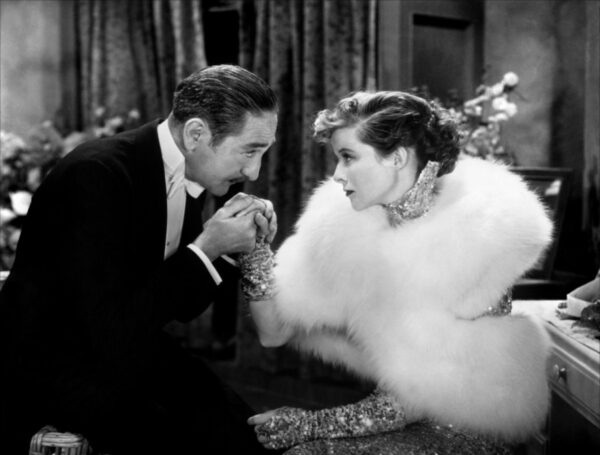
For most people, PNAs (Personal-Named Asteroids) representing one’s own name appear in significant connection to the Sun, Moon, Ascendant or Mercury (ruling the naming function), and Hepburn is no exception, with asteroid Kathryn 2612 (alternate form of Katharine) at 27 Aquarius exactly squared the Moon at 27 Taurus, also squared the Sun. Further, Kathryn conjoins asteroid Victoria 12 at 26 Aquarius, named for the Roman goddess of victory, giving Hepburn that “winning” vibe, reinforced by asteroid Nike 307 (Victoria’s Greek counterpart) opposing the Sun from 25 Scorpio. Hepburn enjoyed a natural confidence and “can do” spirit from these fortuitous placements: it was easy to see herself as a winner.

Often the roles which bring an actor greatest acclaim and official recognition come from parts which are represented by asteroids having strong connections to the Sun or the actor’s PNAs, which promotes a genuine, authentic performance, calling up a part of their true essence. Such is the case with Hepburn, whose premiere Oscar was for the part of Eva Lovelace in 1933’s “Morning Glory.” Only arriving in Hollywood in July of that year, by her third screen outing Hepburn touched Oscar gold! As soon as she saw the script on producer Pandro Berman’s desk, the upstart Hepburn insisted that the role, intended for established actress Constance Bennett, be hers, and RKO obliged. Hepburn had made a good choice – asteroid Eva 164 at 13 Taurus conjoined her Sun, while asteroid Lovelace 333101 at 17 Leo not only squared her Sun, but also closely conjoined her 16 Leo Midheaven, ruler of career, status and place in the world.
When Katharine Hepburn claimed her first Best Actress Oscar at the Academy Awards ceremony held on 16 March 1934, the Sun at 25 Pisces conjoined asteroid Oskar at 28 Pisces, atop her natal Saturn (career) at 24 Pisces, igniting the Grand Cross incorporating asteroids Actor and Academia with Pluto. Transit asteroid Actor tied to the pattern as well, conjoining natal Academia from 17 Sagittarius, while transit asteroid Kathryn at 20 Gemini conjoined Pluto and was exactly squared natal Actor.

Most impressively, transit Katharina at 21 Taurus was an exact match for her natal Sun, while transit Academia at 27 Taurus was exactly atop the natal Moon, and exactly squared natal Kathryn. Transit Eva at 12 Leo, for winning role Eva Lovelace, conjoined her natal 16 Leo MC and natal Lovelace at 17 Leo, while transit Lovelace at 14 Aries squared transit asteroid Victoria at 16 Cancer, named for the Roman goddess of victory.
But early success was quickly followed by a series of films which though critically acclaimed, were box office flops, and by 1938, offered parts in B movies, Hepburn took the bold step of buying out of her RKO contract for $75,000, and left the Golden State. Determined on crafting her own comeback, Hepburn returned to her first love, the stage, and in 1939 signed on for the lead in Philip Barry’s new play, “The Philadelphia Story,” playing socialite Tracy Lord. Again we see the importance of asteroid Tracie conjunct her Sun, in her destiny, for the part was tailor-made for Hepburn, a fact recognized by her then boyfriend billionaire Howard Hughes, who optioned the movie rights for her. The play was a smash success, with critics and audiences, running for 417 performances, and in the following year Hepburn made her triumphal return to Tinseltown, with every major studio courting her.
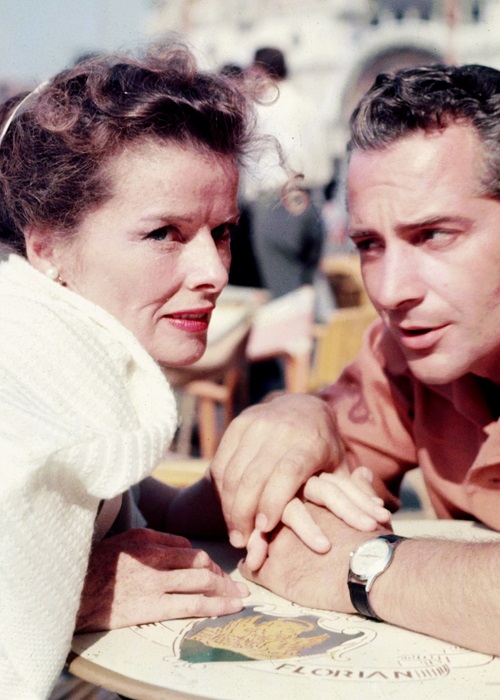
She chose MGM as her cinematic bridegroom, and the film version of “The Philadelphia Story” was nominated for six Academy Awards, including Best Actress, winning two (though Hepburn herself lost out to Ginger Rogers in “Kitty Foyle”). “TPS” was followed up by several popular successes, including “Woman of the Year” (1942), where she met Spencer Tracy. In what may be an apocryphal tale of their introduction, the elan, sylphlike Hepburn quipped to the everyman, notoriously height-challenged actor, “I fear I may be too tall for you, Mr. Tracy,” to which he allegedly replied, “Don’t worry, I’ll cut you down to my size.”
The sizzle between them was palpable, and they went on to star together in “Keeper of the Flame” (1942) and “Without Love” (1945) in rapid succession, their onscreen chemistry mirroring the growing romance between them. By the mid ‘40s, they were an item, and Hepburn put aside professional considerations to focus on helping an ailing Tracy deal with his alcoholism and insomnia, leading to a second career slump for her.

Work was a solace and therapy for both, and by 1948 they were back butting heads in “State of the Union” and trading witticisms in “Adam’s Rib” (1949). Hepburn stepped out on her own again in 1951’s “The African Queen,” with Humphrey Bogart, garnering her fifth Academy Award nomination (and the only win for Bogart), in persistently challenging conditions, filmed on location in the Belgian Congo. Hepburn portrayed missionary Rose Sayers, and the role revived her career; after a nine-year hiatus she was once again nominated as Best Actress, with asteroid Sayers 3627 at 28 Taurus conjoined her Sun and Moon, squared Kathryn; and asteroid Rosa at 16 Aries exactly trine her 16 Leo MC.
Perhaps dampened by Rosa’s close conjunction with asteroid NOT at 15 Aries, Hepburn was passed over at the Awards ceremony for Vivien Leigh’s Blanche Dubois in “A Streetcar Named Desire,” but the boost to Hepburn’s career propelled her into a decade of critically acclaimed work, in film and on stage, including “Pat and Mike” (1952), one of her most popular films with Tracy; a tour of Shakespeare on stage in Australia; “Summertime” (1955) and “The Rainmaker” (1956), both Oscar-nominated performances. In both films, Hepburn found herself fitting comfortably into a new niche for her: the unmarried, older woman who finds new life via romance with a younger man. Hepburn was grazing fifty by now, an age when many Hollywood actresses were finding doors closed to them, but with typical grit, she remade herself, and the best was yet to come.
Hepburn finished out the ‘50s ping-ponging from film to stage, in the US and abroad, teaming with Tracy again in “Desk Set” (1957), another take on the age difference theme, with spinster Hepburn torn between a young admirer (played by Gig Young) and the age-appropriate Tracy (guess which one she picks?). Hepburn wrapped up the decade with Tennessee Williams’ “Suddenly Last Summer” in 1959, opposite Elizabeth Taylor and Montgomery Clift, in an early screen treatment of homosexuality that is painfully careful never to mention its subject out loud.
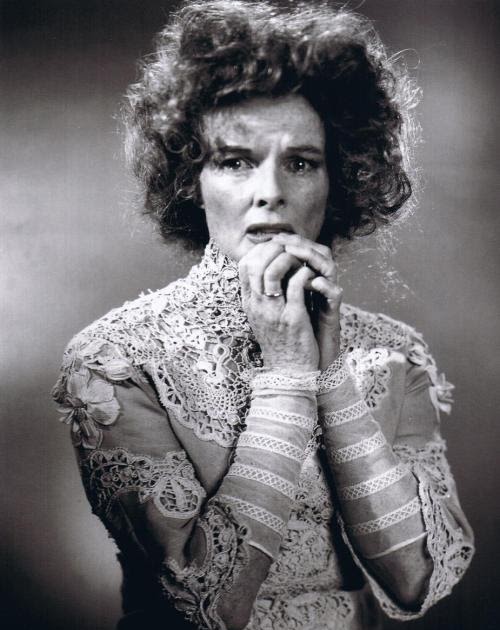
Once again nominated, and once again bypassed, the redoubtable Hepburn burst into the ‘60s with the lead in the film version of Eugene O’Neill’s “Log Day’s Journey into Night” (1962), playing morphine-addicted matriarch Mary Tyrone. It was a low-budget production, but so avid was Hepburn for the part, which she called “the most challenging female role in American drama,” that she worked for just 10% of her established salary. Hepburn considered her performance the best screen work of her career; with asteroid Mary 2779 at 18 Aries again trine the MC, she was nominated once more, but the “NOT conjunction curse” once more applied, and Hepburn lost to Anne Bancroft in “The Miracle Worker.” (NOT also broadly conjoins Oskar at 7 Aries, but Hepburn seems to have overcome that potential difficulty in receiving Academy Awards. However, she did famously never attend an Awards ceremony, until 1974 when she appeared as a presenter. Perhaps that was her subconscious way off defusing her NOT/Oskar hindrance.)
But the era of great disappointments was about to come to an end, as the now 60-something actress pulled off a feat not seen in 30 years, winning back-to-back Best Actress Oscars in 1968 and 1969. From that point on, Hepburn never received a nomination without taking home the win.
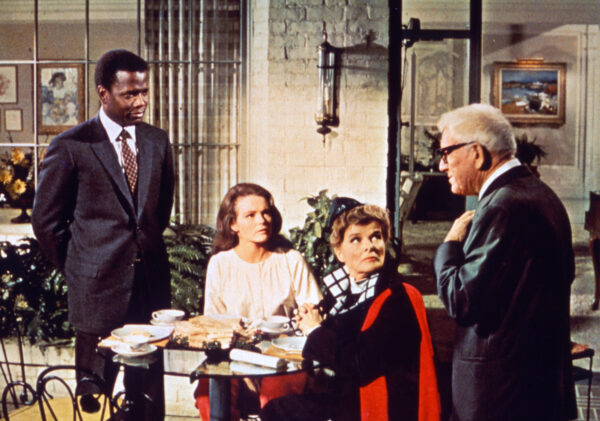
Sadly, it was also the end of the Hepburn/Tracy era as well, with the duo working together for the last time in 1967’s “Guess Who’s Coming to Dinner?” Tracy died shortly after the filming, and it was poor consolation to win her second Oscar for her final role with him, as Christina Drayton. True to form, asteroid Christine 628 at 20 Leo conjoined the Midheaven and squared her Sun/Moon combination, T-Squared Nike.
This second victory, coming on 10 April 1968, 34 years after the first, shared many of the same celestial characteristics. This time it was Oskar paired with asteroid Victoria (winning) at 19 and 22 Pisces that set off the natal Grand Cross which had propelled her career. Identification with the part was seen in real time as asteroids Christine and Kathryn, conjoined at 17 and 21 Taurus, once again combining the actress and her winning role, and highlighting her Sun. Asteroid Academia was at station (turning direct three days prior); from 22 Leo it conjoined her MC and natal Christine, squaring her Sun. Asteroid Katharina at 3 Sagittarius squared asteroid Nike at 0 Pisces, underscoring the win.
In 1968, Hepburn provided what is arguably one of her best performances, as Queen Eleanor of Aquitaine in “The Lion in Winter,” opposite Peter O’Toole. In a stunning tour de force, Hepburn showed there was lots of life in the old girl yet, slugging it out with such heavyweights as O’Toole, Anthony Hopkins and Timothy Dalton, filmed on location in a medieval monastery in the south of France. Hepburn was once again nominated, and once again won, adding to that back-to-back wins record by the only Oscar tie in her category, sharing Best Actress honors with Barbra Streisand for “Funny Girl.”

As with all of Hepburn’s Oscar victories, PNAs representing the role factor significantly. There is no exact match for Eleanor, but asteroid Elinor 2650 at 12 Aquarius opposes the 16 Leo MC and widely squares her 21 Taurus Sun; asteroid Eleonora 354 at 2 Leo trines Oskar at 7 Aries; and asteroid Aquitania 387 (named for Aquitaine, the real Eleanor’s home province) at 19 Cancer trines Nike and bisects her Sun/Actor trine, sextile to each.
When Hepburn collected her third Oscar at the 41st Academy Awards on 14 April 1969, the Sun at 24 Aries squared asteroid Elinor at 23 Cancer (aligned with natal Aquitania), in a T-Square with asteroid Winters 15111 at 23 Capricorn, for “The Lion in Winter” venue which brought the win (nominated in seven categories, the film won three awards, including Best Adapted Screenplay and Best Original Score, highlighted generally by the Sun). The Sun is also exactly trined asteroid Eleanora, embedded at station from 24 Sagittarius (from where it conjoined her natal asteroid Academia at 22 Sag). Eleanora turned retrograde four days later.
Also at station, asteroid Kathryn – at 16 Leo, Kathryn was an exact match for her natal MC, and had turned direct on March 29, but still occupied its station degree. Asteroid Aquitania at 5 Taurus was exactly conjunct asteroid Nike, in a T-Square with natal Elinor and Eleonora. Asteroid Actor at 25 Scorpio exactly conjoined natal Nike, opposing her Sun, which transit asteroid Oskar at 22 Taurus conjoined. Actor also squared transit asteroids Katharina at 17 Aquarius and Kathryn at 16 Leo.
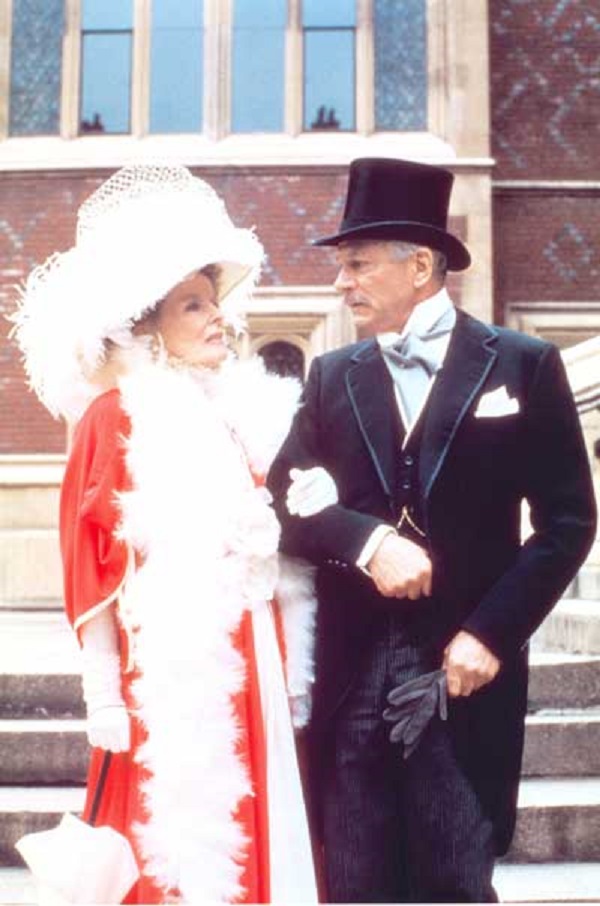
Hepburn didn’t foray into television until 1973, but scored an Emmy nomination her first time out, for Amanda Wingfield in Tennessee Williams’ “The Glass Menagerie.” One of the highest-rated shows of the year, natal asteroid Glass 32564 at 25 Aquarius conjoins asteroid Kathryn at 27 Aquarius, both semisquare asteroid Amanda 725 at 9 Aries, again affording a genuine connection to the role. Despite the presence of asteroid Victoria at 26 Aquarius with Kathryn and Glass, Hepburn, didn’t win (NOT active again, in conjunction with Amanda!), but her TV debut was a triumph nonetheless, and she decided to continue with the medium, of which she was initially skeptical.
Her tenacity paid off two years later, when she took home her only Emmy, as Jessica Medlicott in “Love Among the Ruins” (1975) opposite Lawrence Olivier, a personal friend with whom she hadn’t previously worked. Asteroid Jessie 10464 (for Jessica) appropriately fits her winning pattern, conjoined the Sun from 22 Taurus, opposed asteroid Nike at 25 Scorpio and trine asteroid Emma 283 (for Emmy) at 21 Capricorn. Hepburn would have done well to pay attention to television earlier, with asteroid Emma embedded at station, providing the potential to stock her mantle with Emmys. As it transpired, Hepburn appeared in only eight telemovies, but was nominated six times, a percentage performance much higher than her screen work.
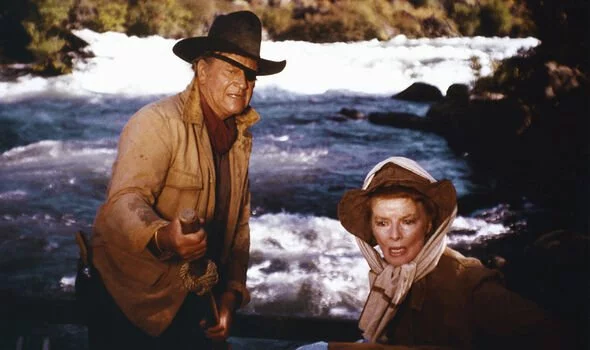
In addition to Olivier, in her final decades Hepburn teamed with several other icons of Hollywood’s Golden Age she hadn’t worked with before. She out-toughed Tough Guy John Wayne in 1975’s “Rooster Cogburn” and was romanced by Anthony Quinn in 1994’s “This Can’t Be Love.” But her greatest collaboration came in 1981’s “On Golden Pond” opposite Henry Fonda, whom she never even met before filming.
“On Golden Pond” became the capstone to Hepburn’s career, bringing her fourth Oscar, setting a record that has yet to be surpassed. Hepburn had seen the play on Broadway, centering on an elderly couple’s struggles with advancing age, and when Fonda’s daughter Jane bought the screen rights for her father, Hepburn (in an echo of her “Morning Glory” persistence nearly 50 years before) actively campaigned for the party of Ethel Thayer, his longsuffering wife. Jane Fonda co-starred as their adult daughter, long estranged from her father.
The movie was a smash success, with critical raves and the second-highest box office gross in 1981. The feisty Hepburn, now 74, even did her own stunts, diving into a lake fully clothed. “On Golden Pond” garnered ten Oscar nominations, winning three, including Best Actress and Best Actor for Hepburn and Fonda. As always, the stars understudied for Hepburn, with asteroid Ethel 2032 at 24 Taurus, smack on her Sun/Moon conjunction, opposed Nike for the win.
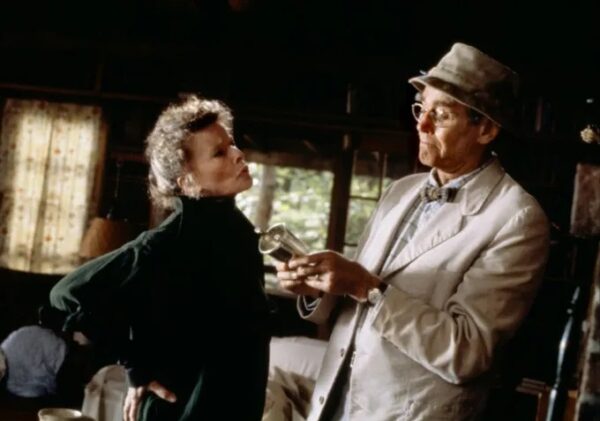
At the 54th Academy Awards on 29 March 1982, the Sun at 8 Aries obligingly conjoined asteroid Kathryn at 8 Aries, both atop her natal asteroid Oskar at 7 Aries, and squared by asteroid Nike at 7 Capricorn. Asteroids Oskar and Actor joined at 18 and 26 Sagittarius, conjunct natal Academia at 22 Sagittarius (with Actor exactly sextile natal Victoria), while transit asteroid Victoria at 16 Aquarius was exactly opposed her natal MC at 16 Leo, also squared the natal Sun. Asteroid Katharina at 27 Cancer participates in a Grand Cross, opposing Academia at 25 Capricorn, with the crossbars formed by asteroid Ethel at 25 Aries and Saturn with Pluto at 19 and 26 Libra, affirming that the elderly (Saturn) Kate (Katharina) was still a powerhouse (Pluto), and a force to be reckoned with at the Oscars (Academia).
Hepburn filled her final active decade with television and small film roles, with 1994’s “Love Affair” her last widescreen appearance, and the telemovie “One Christmas” her final small screen role, in which she, fittingly, starred, in an adaptation of a Truman Capote short story.
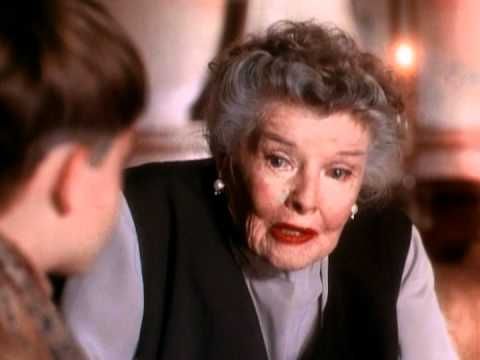
Katharine Hepburn had always been a vital, active woman, sporty and fit (she had performed all her own sporting activities in “Pat and Mike,” including tennis and golf). She bounced back quickly from hip replacement in 1974, a surgery she kept secret for many years, but soon after her final screen appearance, her health began to deteriorate, and she retreated to private life in Connecticut. As she entered her nineties, Hepburn was twice hospitalized for pneumonia, but pulled through in typical tough-as-nails style. In March 2003 she was diagnosed with an aggressive cancer tumor in her neck; a decision was made to take no medical action, and she died at the family home in Fenwick, Connecticut on 29 June 2003, aged 96.
When Katharine Hepburn passed, a triple conjunction of Mercury, Saturn and the Sun at 0, 3 and 7 Cancer squared her natal asteroid Osiris 1923 at 7 Aries, and formed a T-Square with asteroid Kate at 2 Libra, bringing news (Mercury) of the death (Saturn, ancient lord of death; and Osiris, named for the Egyptian god of the dead) of this Leading Light (Sun) of American film and theater (Kate). The Sun also conjoined transit Osiris at 13 Cancer, with both conjunct natal asteroid Fini 795 at 12 Cancer (literally, “the end”), and squaring transit asteroid Actor at 15 Libra.

Transit asteroid Atropos 273 at 21 Virgo, named for the mythic Greek Fate who severs the thread of life at death, conjoined natal asteroid Actor at 20 Virgo. Natal Actor was also squared by asteroid Rip (“RIP”) and Pluto, modern lord of death, from 17 and 18 Sagittarius, with a Grand Cross formed by natal asteroid Lachesis 120 (named for the Fate who determines the span of life) with natal Kate and Saturn at 17, 18 and 24 Pisces; and natal Pluto exact with natal asteroid Libitina 2546 (named for the Roman goddess of burial and funerals) at 22 Gemini, and asteroid Anubis 192 (named for the Egyptian deity governing funerary rites) at 18 Gemini.
Transit asteroid Kathryn at 1 Leo conjoined transit asteroid Lachesis at 0 Leo, both conjoined natal asteroid Requiem 2254 (named for the funeral mass for the dead) at 3 Leo, and squared a stationary Anubis at 5 Scorpio, conjoined her 7 Scorpio Ascendant and natal Atropos at 9 Scorpio, in a T-Square with natal asteroid Rip at 3 Aquarius. Transit asteroid Katharina at 20 Leo is semisquare the Sun/Saturn pairing at 3 and 7 Cancer and squared the natal Sun at 21 Taurus, bringing the wheel of Katharine Hepburn’s life full circle.
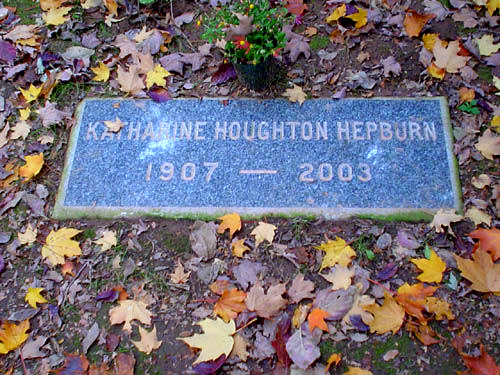
In her eighties, Hepburn once remarked, “I have no fear of death. Must be wonderful, like a long sleep.” So mote it be, Kate – so mote it be!
Alex Miller is a professional writer and astrologer, whose website AlexAsteroidAstrology.com offers a trove of info on the role of asteroids in personal and mundane astrology. He is the author of The Black Hole Book (available on Amazon.com) and The Urban Wicca, former editor of “The Galactic Calendar,” and past president of The Philadelphia Astrological Society. His pioneering work with Black Holes in astrological interpretation began in 1991, when his progressed Sun unwittingly fell into one. Alex’s books and writings are available on his website. Alex can also be reached for comment or services at .
Leave a Reply